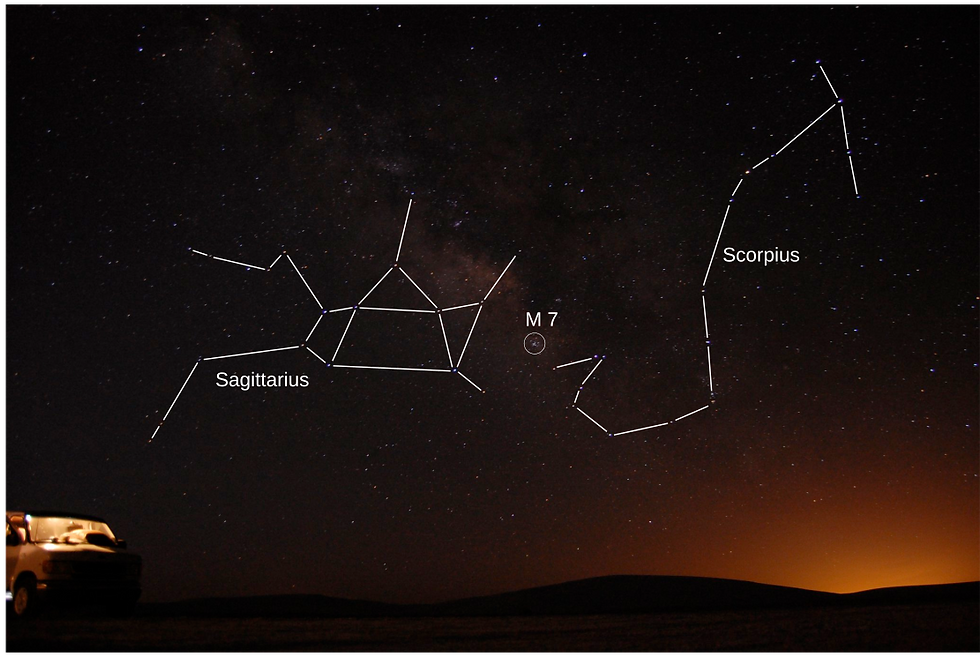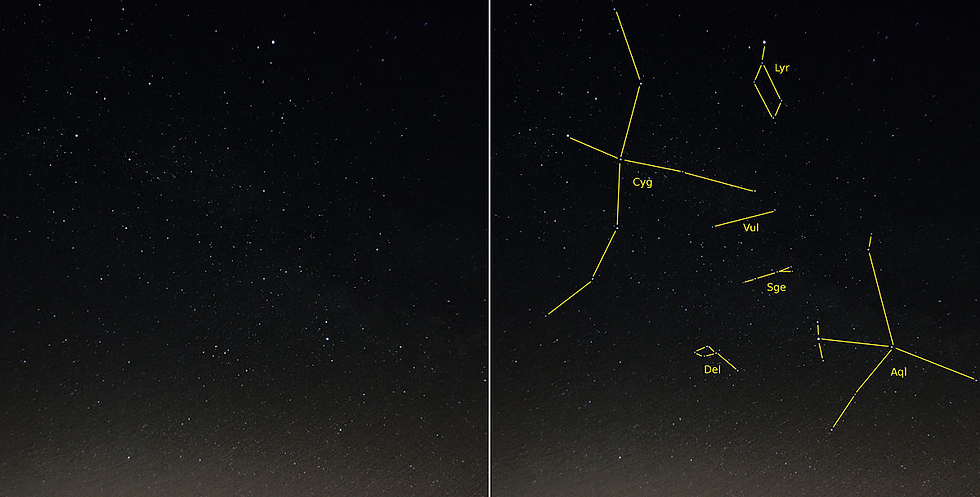How to Identify Constellations: A Simple Guide for First-Time Stargazers
- ARC EDUCATORS
- Mar 18
- 2 min read
Updated: May 18

Constellations have fascinated humans for centuries. They offer not only a glimpse into the night sky but also a connection to our past. For beginners, identifying constellations is one of the most rewarding aspects of stargazing. Let’s break down how to get started with identifying some of the most popular constellations.
If you want to practice identifying constellations with guidance from experts, join us at Arc Educators for our Monthly Stargazing Sessions or participate in one of our Astro-Camps. We’ll show you how to spot constellations with ease.
Step 1: Understanding Star Maps
Before heading out, it’s a good idea to familiarize yourself with star maps or stargazing apps. These tools help you locate constellations and identify the stars in the night sky. A star map typically shows the relative positions of stars and how they form constellations, allowing you to see how the night sky is organized.
Step 2: Start with the Basics
Some of the easiest constellations to spot include Orion, Ursa Major, and the Big Dipper (which is part of Ursa Major). These constellations are visible in many parts of the world, making them perfect for beginners. Orion, for example, is recognizable by its three-star “belt.”
At Arc Educators, our Stargazing Meetups focus on familiarizing beginners with these key constellations. We take you through a practical, hands-on approach to identifying the stars.
Step 3: Use Stargazing Apps
Apps like Star Walk 2 or SkySafari can enhance your stargazing experience. Point your phone at the sky, and the app will tell you exactly what you’re looking at. This is incredibly useful when you’re just starting and helps you identify stars and constellations that might be tricky to recognize.
Step 4: Practice and Patience
Don’t expect to become an expert overnight. The more you stargaze, the better you’ll become at recognizing constellations.
After all, astronomy is all about observations, and the more you do, the more sense the data makes. The star pattern becomes more prominent and easier to detect.
Start by identifying just one or two constellations per session, and gradually, you’ll be able to find many more.
Identifying constellations is a fun and educational part of stargazing. By starting with a few key constellations and using the right star charts, you’ll quickly become familiar with the night sky. Keep practicing, and soon you’ll be able to identify stars, planets, and constellations with ease.
Join our next stargazing event! Sign up now and make your first constellation hunting night truly unforgettable. 🌠✨
Keep following Arc Educators because here,
Mauka Bhi Hai, Dastoor Bhi Hai.















Comments